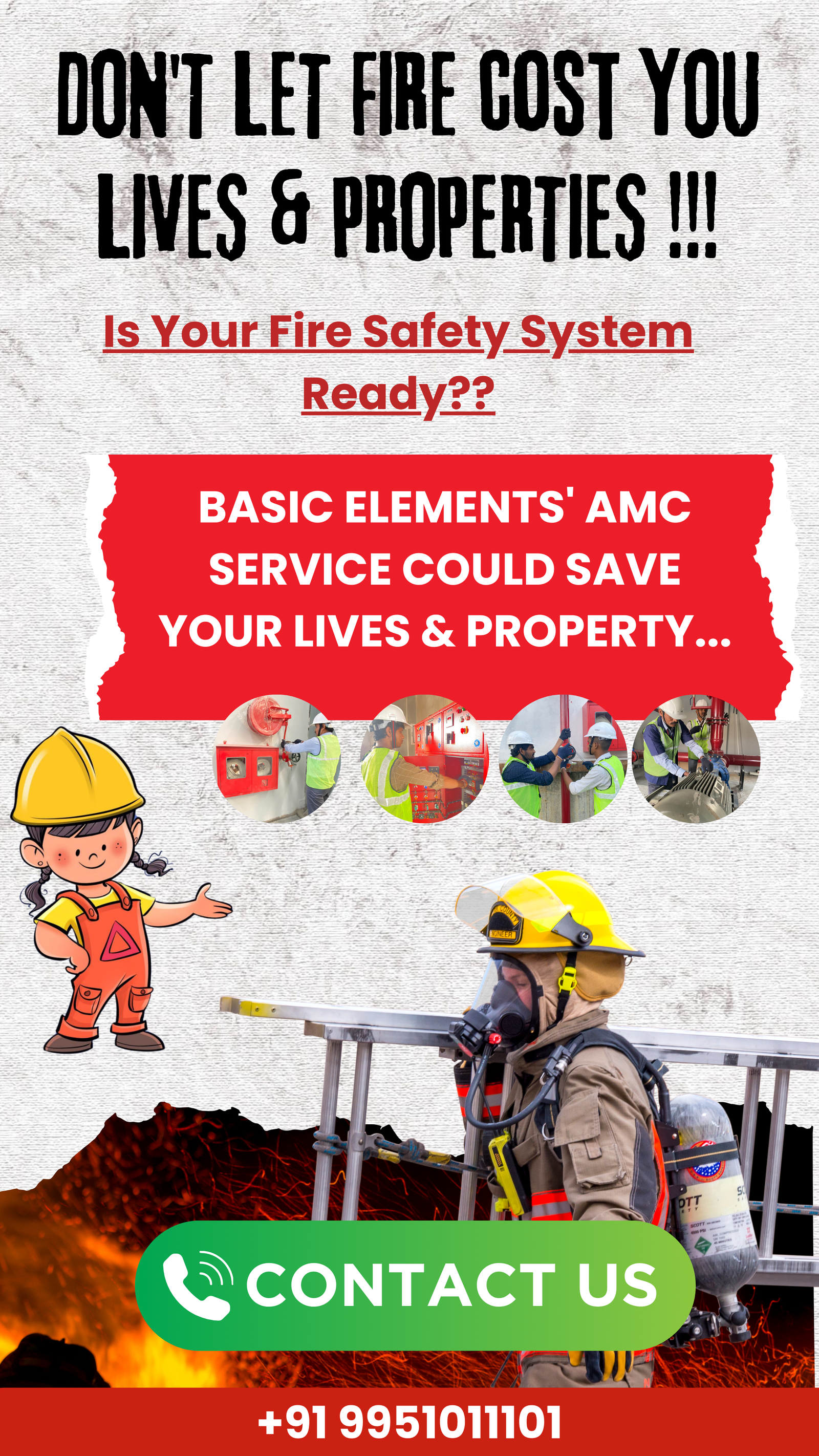Workplace fires can happen anywhere and at any time. Having proper Fire Safety Training For Employees and preparation is critical for all employees. This article provides important information that every employee needs to know about fire safety.
The goal is to educate employees on fire risks, prevention measures, and emergency procedures. With proper training, employees will know how to prevent fires from occurring, detect fires early, use suppression equipment, safely evacuate, and respond appropriately in the event of a fire. Having a well-trained staff is the best way to minimize fire damage, prevent injuries and loss of life, and ensure business continuity.
Fire safety should never be taken lightly. Fires disrupt operations, cause expensive property damage, and endanger employees. That’s why every organization needs to make fire safety training a top priority. The time invested upfront will pay dividends through employees who are prepared to take the right actions in a fire emergency. This article outlines the essential information employees need to stay safe and protect their workplace.
Causes of Workplace Fires
Fires in the workplace often start from preventable causes. Being aware of the common causes of workplace fires can help employees take proactive steps to reduce fire risks. Here are some of the most frequent causes of fires in work environments:
Electrical
- Faulty wiring and outlets
- Overloaded circuits and extension cords
- Older wiring that hasn’t been up to code
- Damaged or faulty electrical equipment
- Appliances left plugged in and unattended
Electrical fires account for around 25% of workplace fires each year. Regular electrical inspections, modernizing wiring, and proper use of electrical equipment can help prevent electrical fires.
Chemical
- Improper chemical storage
- Incompatible chemicals mixed
- Chemical leaks and spills
- Lack of ventilation when working with chemicals
Chemical sources are responsible for roughly 15% of workplace fires annually. Following safety procedures for storing, handling, and disposing of chemicals is crucial.
Mechanical
- Poorly maintained equipment and machines
- Equipment running unattended
- Machinery not being cleaned properly
- Combustible materials near heat sources
Mechanical causes lead to approximately 10% of workplace fires. Keeping machinery properly maintained and monitored at all times is key.
Fire Prevention And Fire Safety Training For Employees
Preventing fires in the workplace is a crucial responsibility for both employees and employers. There are several key ways businesses can reduce fire risks:
- Inspect and Maintain Equipment – Faulty electrical equipment is a major cause of workplace fires. Conduct regular inspections and maintenance on wiring, appliances, machinery, and other equipment. Look for fraying, exposed wires, loose connections, or overloaded outlets and circuits. Repair or replace damaged items. Keep equipment clean to prevent overheating and ensure proper operation.
- Store Chemicals Properly – Flammable chemicals should be kept in fireproof cabinets and stored away from ignition sources. Only keep the minimum amount necessary. Follow all storage instructions on chemical labels and data sheets. Segregate incompatible chemicals that could react. Properly label containers and use approved safety cans.
- No Smoking Policies – Cigarettes and other smoking materials are a frequent source of ignition. Implement and enforce a no smoking policy inside all buildings and around flammable storage areas. Provide designated outdoor smoking areas away from the building. Post no smoking signs and reminders for staff and visitors. Extinguish and safely dispose of smoking materials in appropriate receptacles.
By taking proactive fire prevention steps, businesses can greatly reduce the likelihood of workplace fires starting in the first place. A clean, well-maintained, and safely operated facility is the first line of defense.
Fire Detection Systems
Fire detection systems are crucial for quickly identifying fires in the workplace and alerting occupants to evacuate. There are several key types of fire detection systems that every workplace should have in place:
Smoke Detectors
Smoke detectors are devices that sense smoke and issue an audible alarm to alert building occupants of a possible fire. They are a critical first line of defense for fire safety. There are different types of smoke detectors, including:
- Ionization smoke detectors that use a small amount of radioactive material to detect smoke. They are quicker at sensing flaming fires.
- Photoelectric smoke detectors that use a light beam and light sensor. They are better at detecting slow smoldering fires.
- Dual sensor smoke detectors that combine ionization and photoelectric technology into one unit.
Smoke detectors should be installed on every level of the workplace, including stairwells, hallways, lobbies, storage areas, equipment rooms, and open office areas. They should be mounted high on walls or ceilings and regularly tested and maintained.
Automatic Sprinklers
Automatic sprinkler systems can rapidly suppress fires by spraying water once heat from a fire is detected. Sprinklers are activated by individual heat sensors and only the ones near the fire will turn on, minimizing water damage. All employees should be trained on the location of the main water supply valve and how to turn off the sprinkler system in an emergency if needed.
Alarm Systems
Fire alarm systems provide an audible and visual alert that a smoke detector or sprinkler has been activated. Alarms are essential for notifying occupants to evacuate in the event of an emergency. Fire alarms should be loud enough to be heard by all employees. Emergency strobe lights provide a visual cue. Employees need to understand the difference between a fire alarm and a false alarm and the emergency procedures associated with each.
Regular inspection, testing, and maintenance are crucial for ensuring fire detection systems are functioning properly and can quickly alert occupants to evacuate in the event of an emergency. Proper fire safety training will prepare employees to understand how to respond when these systems are activated.
Fire Suppression Equipment
Having the proper fire suppression equipment readily available and knowing how to use it during a fire emergency is critical. Fire extinguishers, hoses, and sprinklers can help contain a small fire and prevent it from spreading.
Fire Extinguishers
Fire extinguishers are portable devices that can extinguish small fires. They contain chemicals that coat the fuel source and stop the fire’s chemical reaction. Extinguishers come in different types (A, B, C, D, K) which are effective on different kinds of fires. All extinguishers follow easy PASS instructions – Pull the pin, Aim at the base of the fire, Squeeze the handle, Sweep side to side. Employees should familiarize themselves with the different extinguisher types and locations around the workplace.
Fire Hoses
Fire hoses connect to a water supply and allow employees to spray water onto fires from a safe distance. Using a sweeping motion, aim the hose at the base of the flames. Fire hoses provide a constant and powerful stream of water but require proper training on technique to control the hose and avoid injury.
Sprinkler Systems
Sprinklers are automated systems that release water once heat from the fire is detected. The sprinklers contain heat sensitive bulbs that burst at a certain temperature, opening the water valve. This contains the fire by soaking the area until firefighters arrive. Maintaining sprinkler systems and avoiding obstructing sprinkler heads helps ensure they function properly during a fire.
Having accessible, functioning fire suppression equipment and training employees on proper use empowers them to take action against small fires and potentially prevent catastrophic damage.
Emergency Exits
Having clearly marked, unobstructed emergency exits is crucial for fire safety. All exit routes should be clearly indicated with illuminated exit signs that are visible at all times. Exit signs should have backup battery power in case of power failure.
Emergency lighting should be installed in exit pathways and stairwells to aid safe evacuation when visibility is poor. Paths to emergency exits must be free of clutter and obstruction. Exits should open readily and lead directly outside to an open area away from the building. The number, distribution and dimensions of exits should be adequate for the building occupancy load.
Fire doors along exit routes should be tested regularly to ensure they function properly. External exit discharge doors should be checked to confirm they are operable from the inside without keys or special knowledge. Annual inspection of emergency lighting, exit signs and exit door hardware should be conducted and documented. Proper emergency exit design, lighting, and signage provides employees the ability to rapidly evacuate in a fire emergency.
Evacuation Plans
Every workplace should have a detailed evacuation plan that all employees are familiar with. This ensures that everyone knows what to do and where to go in the event of a fire emergency.
The evacuation plan should include:
- Designated meeting place outside the building where all employees should gather after evacuating. This allows management to account for everyone’s safety.
- Regular practice drills of the evacuation plan. This helps ingrain the proper evacuation procedures into employees’ minds, so everyone instinctively knows what to do when the alarm sounds. Drills should be conducted at least annually.
- Training for all employees on the evacuation plan during orientation, and retraining/refreshers periodically thereafter. Employees need to know their specific duties and responsibilities in an evacuation. They should know the nearest exits, the designated meeting place, what to do if exits are blocked, and how to assist mobility-impaired coworkers.
Having a solid evacuation plan that employees are trained on can save lives in a real emergency. The goal is to evacuate the building as quickly and safely as possible, which requires planning, practice, and training.
Fire Emergency Procedures
When a fire alarm sounds, employees should immediately execute the emergency action plan and follow these fire emergency procedures:
- Alert Others: Yell “Fire!” loudly and repeatedly as you exit the building to alert other employees of the emergency. Press the fire alarm pull station on your way out if it has not yet been activated.
- Assist People with Disabilities: Help lead visually impaired people, those in wheelchairs, or anyone else who needs assistance to safely evacuate. Do not use elevators. Go to the nearest enclosed stairwell and wait for firefighters if unable to evacuate. Inform emergency responders of anyone remaining in the building.
- Account for All Employees: Gather at the predetermined meeting spot. Supervisors must account for each employee to ensure everyone has safely evacuated. Immediately report any missing people to the incident commander.
- Fight Small Fires: Attempt to extinguish a small fire only if trained, safe, and with the proper extinguisher at hand. If it becomes uncontrollable, evacuate immediately.
- Follow Directions: Follow all instructions from incident commanders, firefighters, and other emergency responders, including when it is safe to re-enter the building. Do not re-enter on your own.
Fire Warden Responsibilities
The fire warden is someone who is designated to execute fire emergency procedures in a specific area of the workplace. Fire wardens play a crucial role in fire safety and are trained to lead evacuations. Their responsibilities typically include:
- Coordinating the evacuation of their assigned area. Fire wardens help direct employees and visitors to emergency exits and along evacuation routes. They ensure everyone in their area evacuates quickly and safely.
- Conducting head counts once their area is evacuated. Fire wardens account for all occupants that evacuated and report any missing persons or employees who may still be trapped inside.
- Reporting their evacuation progress. Fire wardens notify the fire department, security, or fire safety director once their area is evacuated. They provide updates on the location and nature of the fire, any missing persons, and other relevant details.
- Assisting employees or visitors with disabilities. Fire wardens help anyone who needs assistance evacuating, such as employees in wheelchairs or with limited mobility. This may involve clearing evacuation paths or designating buddies to aid evacuation.
- Securing any critical operations. Before evacuating, fire wardens ensure that any critical equipment or operations are safely shut down. This prevents additional hazards.
- Controlling reentry. Fire wardens enforce prohibitions on reentering or entering evacuated areas until the fire department declares them safe. This prevents injuries and interference with firefighters.
Proper training ensures fire wardens can perform these duties efficiently during an emergency. Their role is vital for safely evacuating areas and accounting for all occupants during a fire.
Fire Safety Training
All employees should undergo comprehensive fire safety training to learn how to prevent and respond appropriately in the event of a fire emergency. This training should cover:
Handling Fire Extinguishers
- Types of fire extinguishers and which are appropriate for different fire classes
- How to properly inspect, maintain, and operate portable fire extinguishers
- Hands-on practice discharging extinguishers in a safe simulation
Employees should become proficient in using extinguishers so they can quickly suppress a small fire if safe to do so. However, their priority is always to evacuate.
Evacuation Drills
- Learning primary and secondary emergency exit routes
- Following proper evacuation procedures like checking for hazards before exiting
- Safely navigating exits and routes even in limited visibility from smoke
- Understanding where to assemble after evacuation
Evacuation drills should be conducted regularly so employees can practice evacuating quickly and safely.
Hazard Identification
- Recognizing common fire hazards in the workplace like overloaded electrical outlets, obstructed exits, improperly stored flammable materials, etc.
- Taking steps to eliminate or minimize hazards by following policies and procedures
- Reporting any identified hazards immediately
With proper hazard identification, employees can take proactive measures to reduce fire risks.
Regular fire safety training ensures all employees know how to respond in an emergency situation, prevent fires through hazard mitigation, and take steps to protect themselves as well as others in the workplace. Hands-on components like operating extinguishers and evacuation drills are critical for developing competency. Training should be repeated periodically to keep skills and knowledge fresh.








Comments are closed.